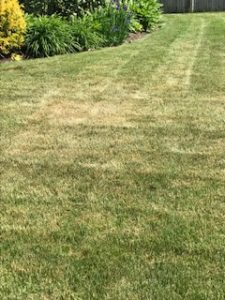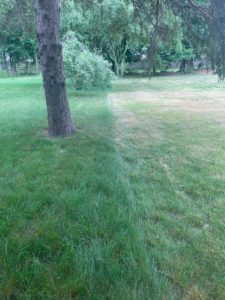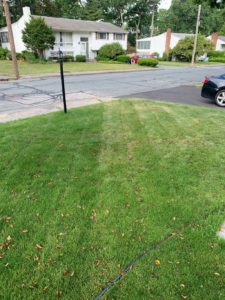 Summer stress is what happens to your lawn after high temperatures, drought, and lots of direct sun. Your lawn may already be experiencing this condition. The cool season grass varieties commonly used in our region tolerate the colder temperatures of early spring and late fall, but may go dormant in the summer heat. Grass goes dormant to protect itself from drying out completely and dying. Here are some lawn care recommendations to minimize the summer stress in your lawn.
Summer stress is what happens to your lawn after high temperatures, drought, and lots of direct sun. Your lawn may already be experiencing this condition. The cool season grass varieties commonly used in our region tolerate the colder temperatures of early spring and late fall, but may go dormant in the summer heat. Grass goes dormant to protect itself from drying out completely and dying. Here are some lawn care recommendations to minimize the summer stress in your lawn.
Mowing
- Right now is the time to let your lawn grow to at least 4 inches. Once it’s too hot, grass growth will slow down.
- Long grass creates shade for itself and keeps soil temperature low which helps it retain moisture and prevent summer weeds.
- Keep your lawn height high until temperatures cool down again in the fall.
- Bagging your clippings may provide a crisp, clean look after mowing. However, feel free to mulch your lawn clippings instead. This returns nutrients to the soil and can help protect the lawn from high temperatures and summer weeds.
Here are some photos showing the importance of mowing height in the summer. The left, greener sides of the lawns in each photo were mowed at 4 inches whereas the right sides were mowed shorter. Notice the right sides are dull in color, starting to brown and seem to not have grown at all since the mow.


Watering
- Water a lot! Your lawn should be getting 1-2 inches of water per week.
- Water early in the morning. Late morning or midday watering evaporates before roots soak it up properly and evening/night watering promotes fungal diseases.
- Water less frequently, but for a longer period of time. This ensures a good drench that promotes deep roots which can store water more efficiently.
Summer stress is inevitable in New England, but following these directions will help reduce its severity and shorten the time your lawn takes to recover from it.
